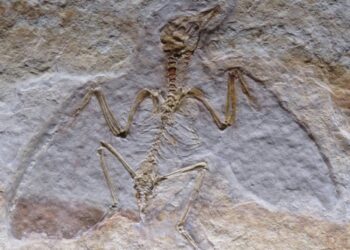The emergence of a vast crack, stretching several kilometers, in south-western Kenya has spurred intense speculation about the possibility of Africa splitting. This geological phenomenon, which caused a section of the Nairobi-Narok highway to collapse, initially raised concerns about tectonic activity along the East African Rift which. However, as geologists delve deeper into its origins, questions arise regarding its connection to the broader rift system and the continent’s potential division.
The Earth’s lithosphere, composed of the crust and upper mantle, comprises numerous tectonic plates that constantly shift and interact. Forces generated by convection currents within the asthenosphere and plate boundaries drive these movements, occasionally resulting in ruptures and rift formation. The East African Rift, spanning over 3,000 kilometers from the Gulf of Aden to Zimbabwe, exemplifies ongoing tectonic activity, dividing the African plate into the Somali and Nubian plates.
Rifting occurs when the lithosphere experiences horizontal extensional forces, leading to thinning and eventual rupture. The East African Rift, an active rift system, bears witness to this process, characterized by surface manifestations like volcanism and seismic activity. The underlying cause of rifting lies in the circulation of the mantle, marked by the rise of a mantle plume known as the “African Superswell.”
Distinctive topography, including fault-bounded depressions and elevated terrain, signifies rift zones. In East Africa, aligned rift valleys separated by bounding faults illustrate the gradual progression of rifting. Despite its slow pace, rifting can result in earthquakes and volcanic activity, shaping the landscape over millions of years.
The Afar region in East Africa serves as a focal point for studying continental rifting. GPS measurements and satellite observations provide invaluable insights into ground movement and geological processes. Despite the challenging environment, researchers continue to unravel the complexities of rifting, exploring triggers for extreme events like the 35-mile crack that opened in the Ethiopian desert in 2005.
While the continent’s division may take millions of years to manifest fully, signs of its transformation are evident. As plates separate at varying speeds, a new ocean basin will eventually form, reshaping the African landscape and creating distinct geological features.
While Africa splitting may seem imminent in geological terms, the process of Africa splitting unfolds gradually over vast timescales. By studying rift zones like the East African Rift, scientists gain valuable insights into Earth’s dynamic processes, shedding light on the continent’s remarkable geological evolution.
As ongoing research endeavors illuminate the mysteries of continental rifting, the journey towards understanding Africa’s geological transformation continues, offering profound insights into our planet’s intricate mechanisms of change.
Exploring Africa’s Rift: Key Questions
How long will it take for Africa to split apart? Africa’s split, driven by the East African Rift, is a gradual process that unfolds over millions of years. While precise timelines vary, estimates suggest it may take 5 to 10 million years for the continent to undergo significant division.
What will Africa look like in 2050? In 2050, Africa’s geological landscape will likely reflect ongoing rift activity, with the East African Rift serving as a prominent feature. While the continent may show signs of rifting, the process will still be in its early stages, and significant changes in landmass configuration may not be apparent.
What countries are Africa splitting apart? The East African Rift, stretching from the Gulf of Aden to Zimbabwe, divides the African plate into two unequal parts: the Somali and Nubian plates. Countries situated along the rift, including Ethiopia, Kenya, Tanzania, and Mozambique, experience the effects of tectonic activity and potential future division.
Is a new ocean forming as Africa begins to split? As Africa’s plates gradually separate along the East African Rift, the formation of a new ocean basin becomes a possibility over geological timescales. Material from deep within the Earth rises to the surface, eventually leading to the creation of oceanic crust and the flooding of rift valleys, marking the birth of a new oceanic expanse.
In summary, Africa’s rift-driven transformation represents a profound geological phenomenon with far-reaching implications. While the process unfolds slowly, the continent’s evolution offers a glimpse into the dynamic nature of Earth’s tectonic processes and the ongoing reshaping of our planet’s surface.
Image Credit: James Wiseman on Unsplash





